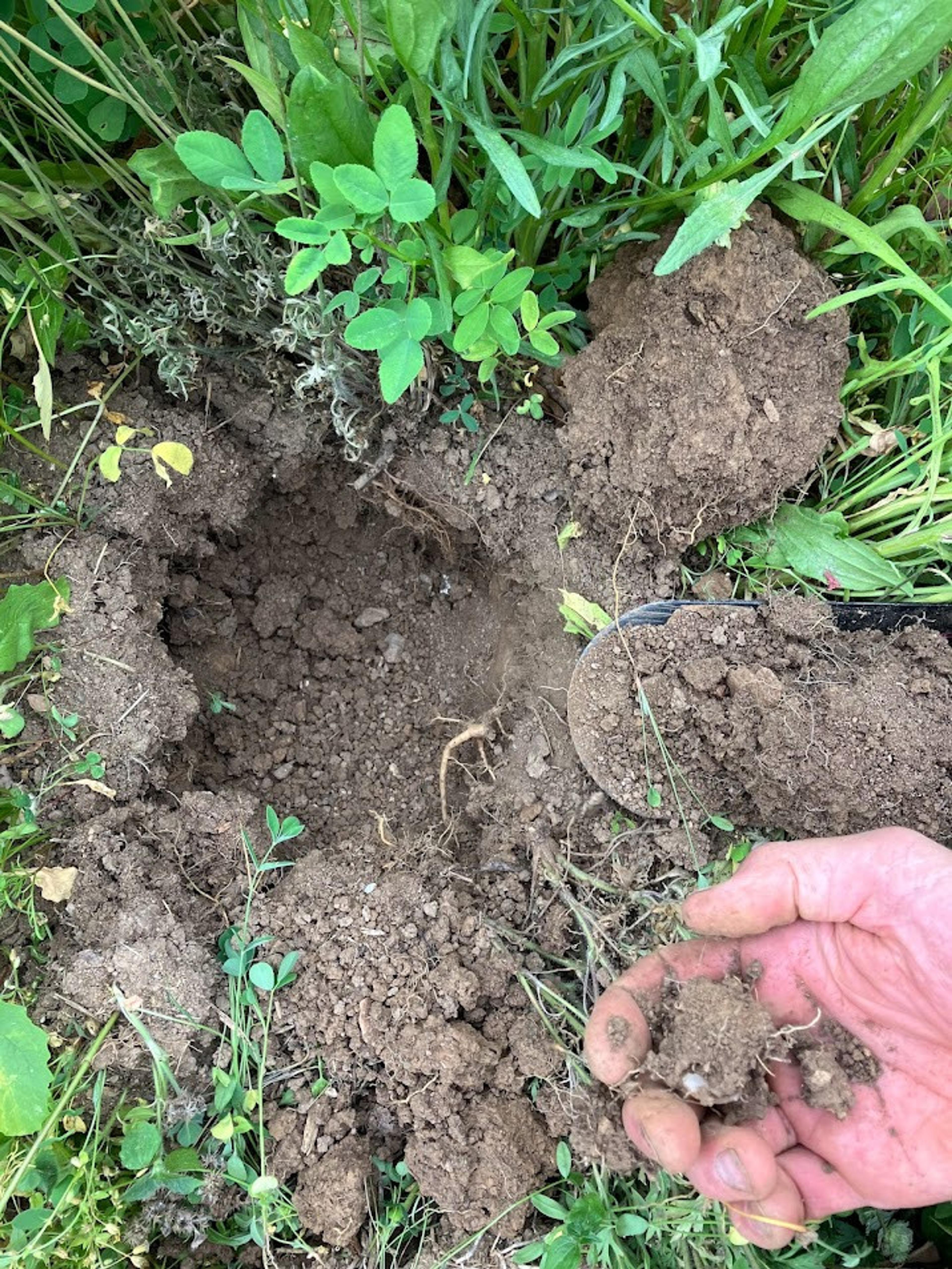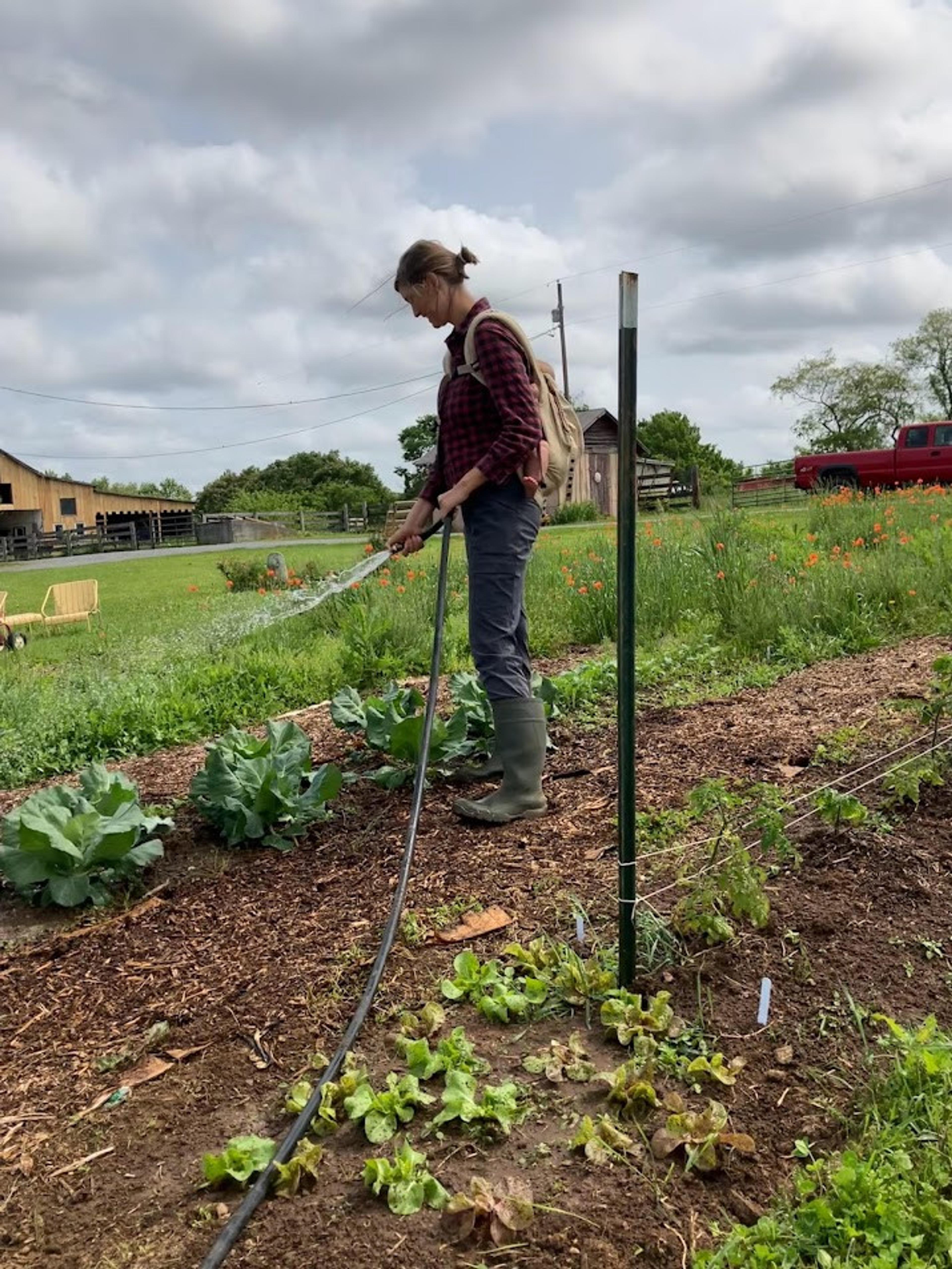Garrett Heydt started raising a few chickens to feed his family, and soon found himself running a direct-to-consumer meat operation that outgrew their 15-acre farm.
By 2023, Rucker Farm was moving beef, pork, and poultry through an e-commerce platform, managing multiple enterprises, and generating enough revenue that Heydt came to a hard realization: if they wanted to keep scaling, they'd need serious capital. "We knew we had to make a jump to continue growing,” said Heydt. Traditional credit cards weren’t going to cut it.
The challenge wasn’t demand. It was proving to lenders that what began as a backyard side project had grown into a financially viable business.

Laying the Foundation with Ambrook
Heydt's bookkeeping journey started like many small operations: Excel spreadsheets and good intentions. After a disastrous 72-hour experiment with QuickBooks (“just a bunch of IT people” for support), he went back to manual tracking.
The turning point came when he realized that professional growth required professional systems. “You kind of need to have your mind on the animals and in the field,” he says. “It shouldn’t be spent keeping track of stuff for hours.”
In 2023, Heydt became one of Ambrook’s earliest customers. The platform finally gave him something spreadsheets and QuickBooks couldn’t: a clear, enterprise-level view of his finances — with the ability to track profitability and generate reports without hours of manual work.
“I needed a better way to keep track of everything — without taking time away from the animals or the field,” he explains. “Ambrook gave me the visibility and professionalism I needed to treat this like a real business.”
With Ambrook, he could separate enterprises, understand the cost of production, and back up every decision with data. He started using that insight to set goals, identify constraints, and — eventually — prepare for a major leap forward.
The Growth Challenge
Heydt’s operation had grown steadily since 2020, but growth in agriculture often means spending money before you make it. As Rucker Farm expanded, Heydt realized that nearly 80% of their expenses hit in just three months — creating a serious seasonal cash flow crunch that credit cards couldn’t solve.
The numbers told the story. With Ambrook’s reporting tools, Heydt could track profitability and year-over-year growth across his enterprises. The data was clear: no matter how efficiently they ran the farm, their current 15-acre setup wouldn’t offer long-term financial security for a family with three young kids.
“Being able to pull the reports and see how we were growing showed us that even with how profitable we were, our operation wasn’t going to support our family in the long run if we didn’t expand beyond those 15 acres,” Heydt recalls.

Applying for Credit
"Unless you've gotten really creative on how to operate seasonally, I think it's pretty essential to get a line of credit specifically designed for farmers,” said Heydt.
To avoid relying on high-interest credit cards, Heydt calculated the maximum amount he might need during the leaner months — assuming income stopped completely. It was a conservative approach that demonstrated financial discipline. The number: $125,000.
The bank’s response revealed how much that preparation mattered.
They sent him a blank balance sheet form that, at first, looked “very daunting.” But thanks to Ambrook, Heydt didn’t have to spend weeks digging through scattered records. Instead, he had a different kind of conversation with his loan officer.
“I asked her, ‘Can I just export a balance sheet?’ She said yes. Because of Ambrook, I was able to send it over in two minutes,” he recalls. “That got me having dinner with my family that evening — instead of trying to figure out how to fill out this form in a way that would make them say yes.”
The bank approved the full line of credit.
Looking Professional
For Heydt, getting approved for credit wasn’t just about having the right financial data — it was about presenting it professionally.
“I think the decision boils down to more than just a feeling with these credit approval managers,” he reflects. “Not only do they not have to hold your hand through a balance sheet, but here you are with a formal invoice instead of a scratch piece of paper. It’s a level of professionalism.”
That professionalism extended beyond the application itself. “It shows we’re taking this credit line seriously. It shows that we’re responsible enough to keep it straight, stay organized, and pay it down over time.”

Scaling the Operation
Today, Heydt is carefully drawing from the $125,000 line of credit to cover seasonal expenses — knowing that in the coming months, revenue will rise. As sales pick up, he plans to pay it down and continue reinvesting in the farm’s growth.
Because Ambrook helped him track, sort, and categorize every dollar, Rucker Farm was finally able to act on opportunities that would’ve been out of reach during leaner months — like bringing new beef animals onto the land instead of holding back for lack of funds.
Access to capital has transformed Rucker Farm’s trajectory. Instead of turning down growth opportunities during peak season, Heydt can finally say yes.
“We know we have an outlet,” he says. “We never really had the funds we needed to capitalize on the opportunity this time of year. Now we do.”
The farm has since relocated to Louisa, Virginia, where Heydt now manages 41 head of cattle — a major jump from the four or five he could handle on the old property.
His focus has shifted from small-scale, intensive production to a more sustainable model centered on beef and turkeys — enterprises that suit both the land and his time. “I really have a respect for beef, and I enjoy raising turkeys,” he explains. With no hired outside labor, he does most of the work himself.
Building Systems for Long-Term Growth
On top of supporting this line of credit and solving immediate cash flow challenges, Ambrook enabled something more: financial clarity.
“Now we have the ability to track it and sort it and categorize it and pay it off,” he says — a far cry from the early days of spreadsheets and guesswork.
That discipline supports much bigger ambitions. “My goal is to run a cow herd of a hundred, market 100 head of beef, and do a thousand turkeys,” Heydt explains. “With the amount of gross that requires, our profit margin would be reasonable for a healthy living for our family.”
Eventually, he hopes to scale to five or six employees — but only when the numbers justify the complexity. For now, he’s focused on building a sustainable operation and making smart, confident business decisions.

Reflecting
Looking back on the transition from hobby farmer to agricultural entrepreneur, Heydt sees financial infrastructure as foundational — even if the learning curve was steep. “There’s no legitimate reason not to be properly tracking and bookkeeping,” he says, while acknowledging it didn’t come naturally at first.
Support from Ambrook’s team made the difference. “Every time I learn something, I realize it saves me time,” he explains. “Like, I don’t really like bookkeeping... but I do it because it needs to be done. And it’s nice when you can keep becoming more efficient at it.”
His advice for other operators considering a similar leap? “Even if you just count the hours it saves you, that alone is worth it. But then you also have the stats right there in front of you to make decisions.”
For Rucker Farm, professional bookkeeping wasn’t just about securing a loan — it was about proving they deserved one, understanding exactly what it cost, and building systems that could support the business they were becoming, not just the one they had been. The path wasn’t always linear, but with the right foundation in place, they were ready when opportunity came.
